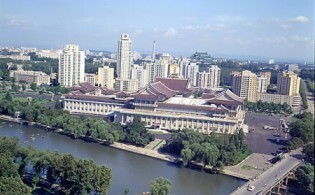Riparian Forest and Gallery Forest they are forms of vegetation that accompany water courses and drainage environments in general. They are characterized by the biological importance they exert on the environment in which they are installed, mainly avoiding the occurrence of river erosion.
The basic difference between these two forms of vegetation lies in their physiognomies. The gallery forests surround the river bed, forming a kind of “tunnel” or gallery, while in the gallery forests the environment is open. In gallery forests, the crowns (upper part) of trees between the two sides of the river meet, while in riparian forests this does not happen.

Riparian Forest: the tops of the trees on one side of the river do not meet those on the other side

Gallery Forest: forest that forms a gallery over the rivers
Do not stop now... There's more after the advertising ;)
These types of vegetation are important in order to preserve the environment of watercourses. Its roots act to make the soil firmer, so that its removal can cause erosion processes on the margins of rivers and intensify siltation processes, resulting in the widening of rivers and the consequent decrease of the depth.
Another important function of Riparian Forests and Gallery is the role they play in water quality. They act as a kind of “filter” that prevents the contamination of rivers by agricultural pesticides and pollutants in general.
Therefore, it is extremely important to preserve these vegetable coverings, as their removal by man to carry out agricultural or livestock activities may even lead to the extinction of courses of water.
By Rodolfo Alves Pena
Graduated in Geography
Would you like to reference this text in a school or academic work? Look:
PENA, Rodolfo F. Alves. "Ciliary Forest and Gallery Forest"; Brazil School. Available in: https://brasilescola.uol.com.br/geografia/mata-ciliar-mata-galeria.htm. Accessed on June 28, 2021.



